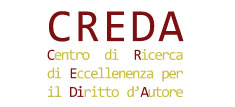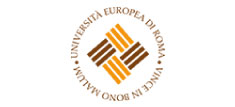L'Autorità Garante della Concorrenza e del Mercato, in data 26 luglio, ha autorizzato con condizioni…
Trade Secret Protection in the Digital Age. From National fragmented regimes to the EU common regime, l’abstract dell’intervento della Prof.ssa Valeria Falce al Congresso ATRIP di Montpellier
Di seguito l’abstract dell’intervento con il quale la Prof.ssa Valeria Falce dell’Università Europea di Roma parteciperà al 33esimo Congresso annuale della International Association for the Advancement of Teaching and Research in Intellectual Property (ATRIP) dal titolo “Intellectual Property perspectives on the regulation of new technologies“, evento previsto a Montpellier, Francia, dal 6 al 9 luglio prossimi Trade secret protection plays a fundamental role in the digital economy. Thanks to the impressive reduction of transaction costs that the Internet has made possible, in fact, new forms of cooperation with open science and open innovation are likely to be promoted, possibly leading to new business models for using co-created knowledge. The benefits connected to inter- and intra- sector cooperation are materializing in i) traditional off-line contexts where shared knowledge is a prerequisite or an important ingredient of the relevant innovative process (i.e. mechanical industry); ii) in sectors that, although conventionally separated, are shortening the distance of their innovative process thanks to the net (i.e. biotechnology and information technology leading to bio-informatics, etc.); iii) in specific digital environments (i.e. cloud computing and information technology markets in general; telecom markets, etc.). Since in each of the above contexts research builds on prior work, sharing of knowledge and new findings represent important leverage for further innovation. Of course, intellectual property rights (IPRs) identify necessary but not sufficient legal means to incentivise innovation and boost the confidence of businesses, creators, researchers and innovators in collaborative innovation. In particular, IPRs identify an essential part of an innovation policy because they protect the results of creative or inventive efforts. However, IPRs as such are unable to secure the entire inventive process because information compiled and developed therein may have a substantial economic value even when it does not qualify for IPR protection. That is why the creation of an innovation-friendly environment is a priority in Europe. At Member State level, despite the TRIPS Agreement shall fix the general architecture, different National models and rules apply. At EU level, within the initiative “Innovation Union”, one of the pillars of Horizon 2020, on the 28th of November 2013 the European Commission has adopted a comprehensive strategy to ensure that the Single Market for intellectual property acts efficiently and within this framework that trade secret protection is harmonised. To this end, in place of a current fragmented system the intention of the European Commission is to design a common regime where the level of protection is adequate and the means of redress (if trade secrets are stolen or misused) are effective. Moving from the above background, in the following trade secret protection in the digital age will be analysed from a specific angle, i.e. from the analysis of a samples of National regulations to the most consistent EU solution. In particular, some Member State regulations will be examined with the view to verify if and to which extent they comply with those “check and balances” clauses that TRIPS Agreement introduced in order to promote innovation without stifling competition. As a response to the resulting puzzled scenario, the very recent EU draft Directive on trade secret will be investigated as well as the legal consequences deriving from its adoption, since its principles and rules will frame National legal architectures, in the sense to restore and confirm the unfair competition paradigm – rather than upgrading TS to the rank of IPRs – as the relevant model to safeguard technical and business confidential information in the Innovation Union. 3 luglio 2014








